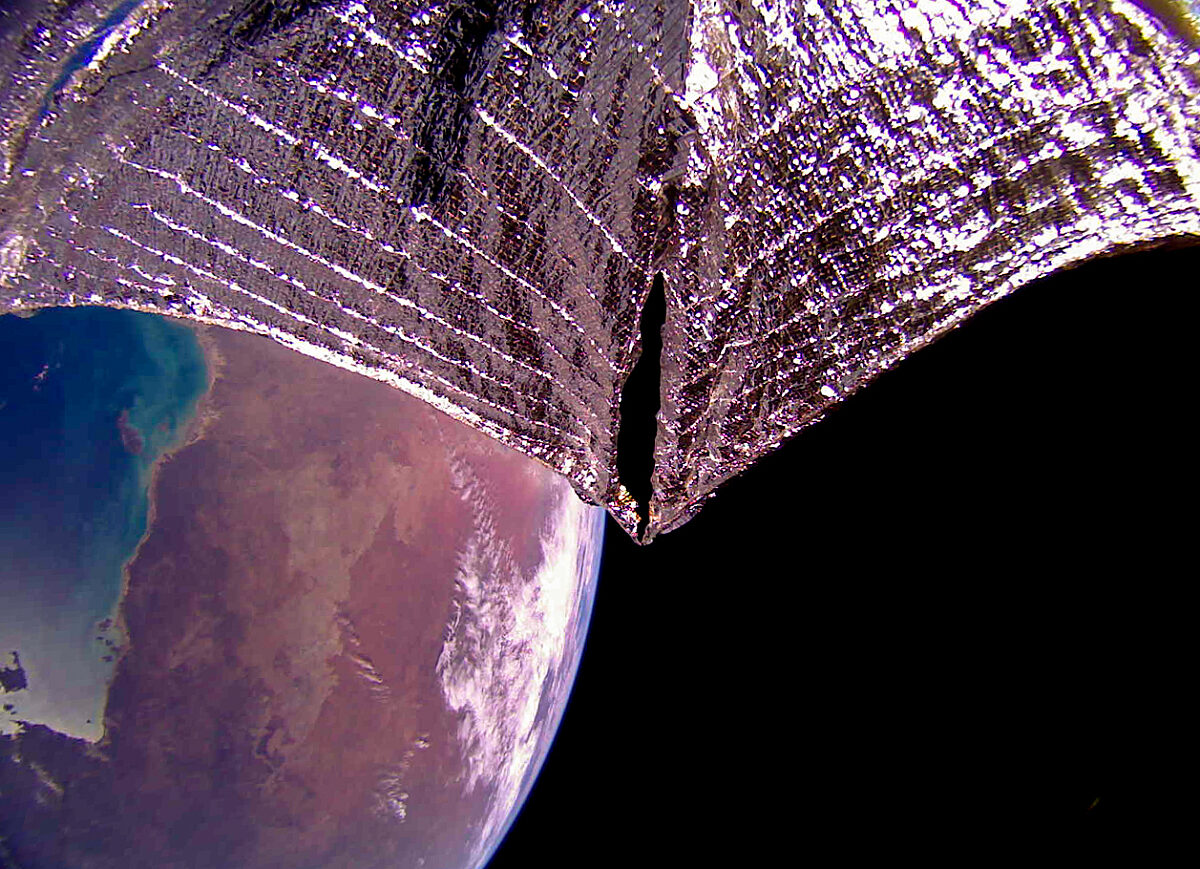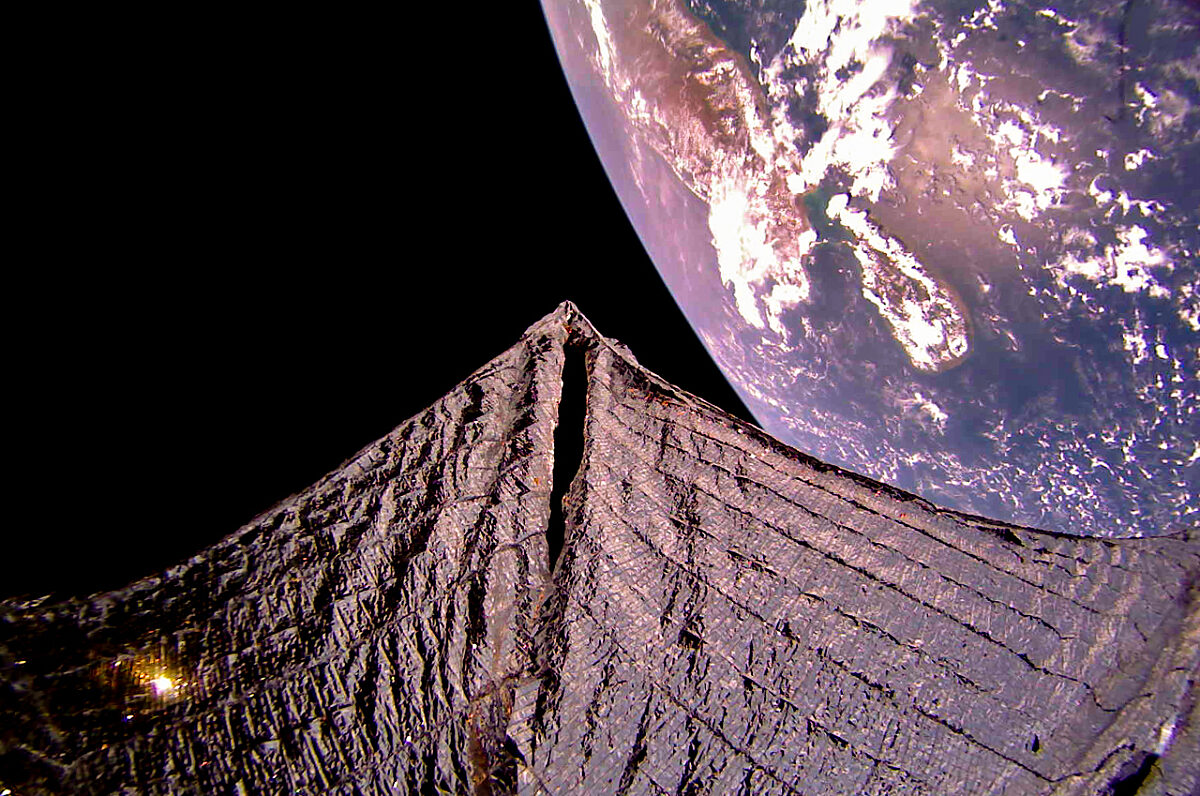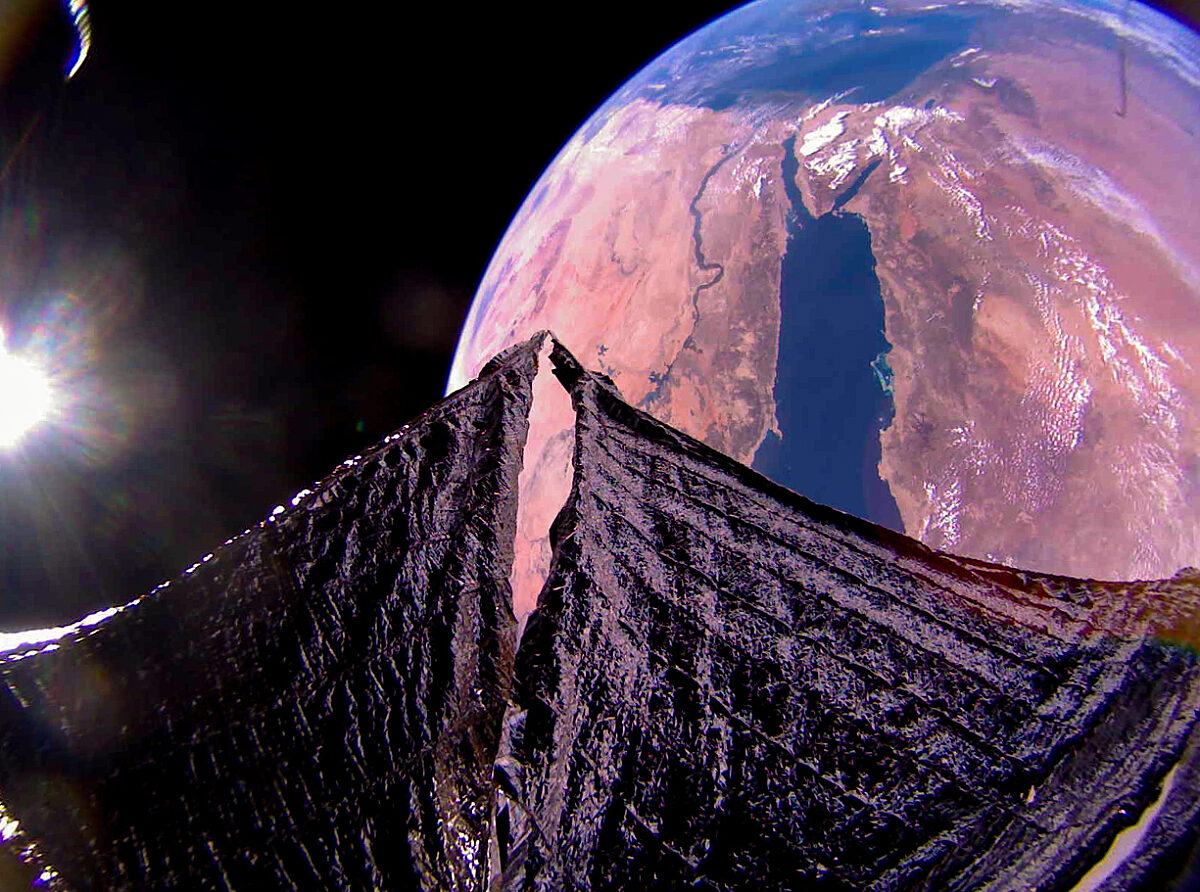Bruce Betts • Jun 25, 2021
LightSail 2 completes second year in space
Two years after launching into Earth orbit aboard a SpaceX Falcon Heavy rocket, LightSail 2 is still solar sailing and the spacecraft has completed its first year of extended operations. Despite some spacecraft anomalies and degradation, recent software modifications have enabled the spacecraft to sail often as well or better than at the beginning of the mission.

Beyond its primary mission design and in the harsh environment of space, we are fortunate that LightSail 2 is still working and at an altitude where we can continue to experiment with solar sailing. Eventually, atmospheric drag will bring the spacecraft down enough that it will experience a fiery re-entry. We can’t say for sure when that will occur, but it isn’t soon. Its average altitude, currently about 692 kilometers above the Earth’s surface, has only dropped about 25 kilometers since the start of the mission in 2019. Below-average Sun activity has kept Earth’s upper atmosphere calm, creating less drag on the sail. The spacecraft also offsets some of the drag with the thrust gained by solar sailing.
We plan to operate LightSail 2 as long as possible in order to learn more about solar sailing, solar sail spacecraft operations, and evolution of the sail and booms over time. We also want to continue raising awareness of solar sailing by sharing the excitement of the mission with the public, working directly with upcoming NASA solar sail missions, and documenting our results to ensure the strongest possible legacy for the LightSail program which has been funded entirely by Planetary Society members and donors.
Here are some of our goals for LightSail 2’s ongoing extended mission, along with updates on what we’ve learned.
Improve solar sailing performance as much as possible
We strive to improve solar sailing performance even as LightSail 2 dips lower and lower into Earth’s atmosphere and the sail itself degrades, meaning that improving the spacecraft’s performance will only get more difficult.
We monitor daily the decay rate of our average orbital altitude (or equivalently, the decay rate of the semi-major axis of the orbit), which is affected by the efficiency of solar sailing versus atmospheric drag. On a typical day, atmospheric drag wins, and the average altitude gets lower by tens of meters. When we are not in solar sailing mode, the spacecraft typically loses 50 or more meters of average altitude per day. When we are in solar sailing mode and sailing well, that number is smaller, often losing 20 meters or less and even occasionally gaining average altitude in a day.
We have also experimented with different frequencies and durations of the modes used to desaturate the spacecraft’s spinning momentum wheel. The momentum wheel is used for the 90 degree rotations of the spacecraft we do nominally twice an orbit. Without desaturation, the wheel would eventually reach its maximum speed (be “saturated”) and cease to be effective at rotating the spacecraft.
We also regularly monitor and analyze the spacecraft’s attitude, or orientation, in order to determine how accurately we are pointing the sail where we’d like. We develop and test techniques to improve attitude determination and control. In one example, we noticed the gyroscopes, used to measure the spacecraft spin rates, were slowly falling out of calibration. We determined the proper offsets to try to fix this by comparing the gyro measurements against spin rates determined from the magnetometers. We tested the software that was developed to implement the gyro offsets on our ground-based BenchSat spacecraft model. We uplinked the corrections to the spacecraft and evaluated how well we had fixed the problem. With the updated software, solar sailing markedly improved, resulting in orbit decay rates that are the lowest we’ve seen since the early days of the mission.

Operate the spacecraft in different modes and observe the results
Like NASA’s Ingenuity helicopter on Mars, LightSail 2 is a technology demonstration mission meant to push the envelope of what is possible and pave the way for future spacecraft.
We have operated LightSail 2 in several different modes to see how well it maintains its desired orientation, and the resulting effect on its orbit. Modes we’ve experimented with are:
Solar sailing mode: a standard sailing mode where we turn edge-on to the Sun when traveling towards it to turn off thrust, and face-on when traveling away from the Sun to gain a push from solar photons. This is our most-used operational mode, and typically results in a loss of average altitude of about 20 meters per day, with recent performance even showing some days with average altitude increases.
Detumble mode: currently in use once every two days, this mode uses magnetorquers to create magnetic fields that work against the Earth’s magnetic field to reduce spin rates and allow desaturation of our momentum wheel. When we stay in this mode or “No torques mode” (below) for an extended time, average altitude losses in excess of 50 meters per day are common.
No torques mode: turns off magnetorquers and the momentum wheel so no torques are introduced into the spacecraft. Every detumble mode for desaturation is followed by a brief no torques mode to help the batteries fully charge before transitioning back to solar sailing mode and also to demagnetize the magnetorquers.
Sun pointing mode: the spacecraft maintains a face-on Sun pointing mode throughout its orbit to optimize power generation on the solar panels.
Drag maximizing mode: LightSail 2 maintains a face-on attitude to the direction of motion to study how solar sails can intentionally generate drag and de-orbit spacecraft. We use this mode occasionally and will probably use it more when LightSail 2 gets lower in the atmosphere.

Continue taking pictures
We love sharing pretty pictures from LightSail 2 with the public. These pictures also serve an important engineering purpose by showing us how the sail is degrading due to the harsh space environment, and how the four metallic booms that hold the sail tight are behaving.
Recently we have seen possible degradation of the sail through shrinkage, crinkles, and likely delamination of the sail’s reflective coating in some areas. We have also noticed systematic changes in the position of sail boom tips in images, as well as non-systematic changes that may be caused by thermal expansion and contraction of the sail booms. Analyses are ongoing.
Automated fault detection
Whether it’s a big-budget NASA mission or a crowdfunded CubeSat, computer glitches and unexpected behaviors are part of every space mission. Automated fault detection software can help speed the detection of problems.
Purdue researcher Justin Mansell developed a fault detection and diagnosis algorithm that he applied to LightSail 2 as part of his Ph.D. dissertation. When applied to LightSail 2 telemetry data, Mansell’s software has successfully spotted anomalies, such as temporary glitches in the magnetometers and gyros, that may have otherwise been overlooked or found more slowly.
Sharing, coordinating, and archiving
LightSail 2 is meant to enable and support future solar sailing missions. A big part of our extended mission is sharing what we are learning. We publish peer-reviewed journal articles, make conference presentations, and conduct public outreach through social media and articles like the one you’re reading right now.
We also interface directly with other solar sailing missions. NASA has three such missions planned: NEA Scout, Solar Cruiser, and ACS3. We share data and facilitate additional studies to help these mission teams learn from our experiences. Furthermore, we document and archive our LightSail 2 data so that it will be available for analysis by future missions.
Fly the spacecraft
There’s one more important aspect of the LightSail 2 extended mission: we have to fly the spacecraft!
I’d like to extend a big thank you to our core team*. We meet on a daily basis to assess spacecraft health and performance, and to plan future activities. Our team carries out ongoing maintenance and monitoring to keep the spacecraft functioning properly. We uplink orbital elements twice a week so that the spacecraft knows where it is. Maintenance activities also include clearing file space on the onboard computer as needed, working issues and anomalies as they arise, and monitoring engineering telemetry.
These past two years of LightSail 2 operations would not have been possible without the support of our members and donors. Thanks to your support, we’ll be able to continue learning as much as we can from this unique mission!
*The LightSail 2 Operations Core Team is: Dave Spencer (project manager, JPL/Vestigo Aerospace), John Bellardo (Cal Poly San Luis Obispo), Barbara Plante (Boreal Space), Justin Mansell (Purdue University), and Bruce Betts (program manager, The Planetary Society).
The Time is Now.
As a Planetary Defender, you’re part of our mission to decrease the risk of Earth being hit by an asteroid or comet.
Donate Today

 Explore Worlds
Explore Worlds Find Life
Find Life Defend Earth
Defend Earth

